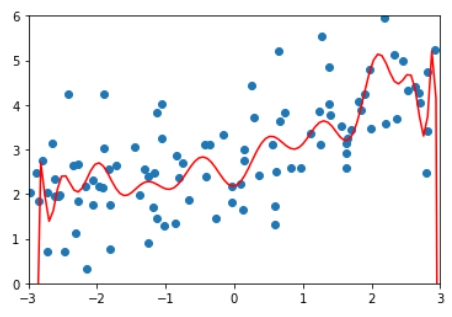8-8 模型正则化 Regularization
模型正则化:限制参数的大小
一个过拟合的例子:

这是8-3中的一个过拟合的例子,把模型的参数打出来如下:

为了尽量地拟合数据,使得线条非常陡峭,数学上表示就是系数非常大
岭回归 Ridge Regularization

Note 1: 正则项是从1累加到n的,theta 0不在里面,因为theta 0代表偏移,不是真正的系数。 Note 2:系数1/2加不加都可以,加了是为了求导方便。 Note 3:a是一个新的超参数,表示目标函数中模型正则化的程度。
代码实现
测试数据

多项式回归,degree = 20
训练模型
绘制模型
训练效果

岭回归,degree=20, alpha = 0.0001
训练模型
训练效果

多项式回归及岭回归不同参数的训练结果比较
MSE
拟合曲线
多项式回归,degree = 20
167.94010867772357

岭回归,degree=20, alpha = 0.0001
1.3233492754136291

岭回归,degree=20, alpha = 1
1.1888759304218461

岭回归,degree=20, alpha = 100
1.3196456113086197

岭回归,degree=20, alpha = 10000000
1.840889124848122

当a非常大时,本质上成了优化正则表达项,即让所有theta=0
Last updated